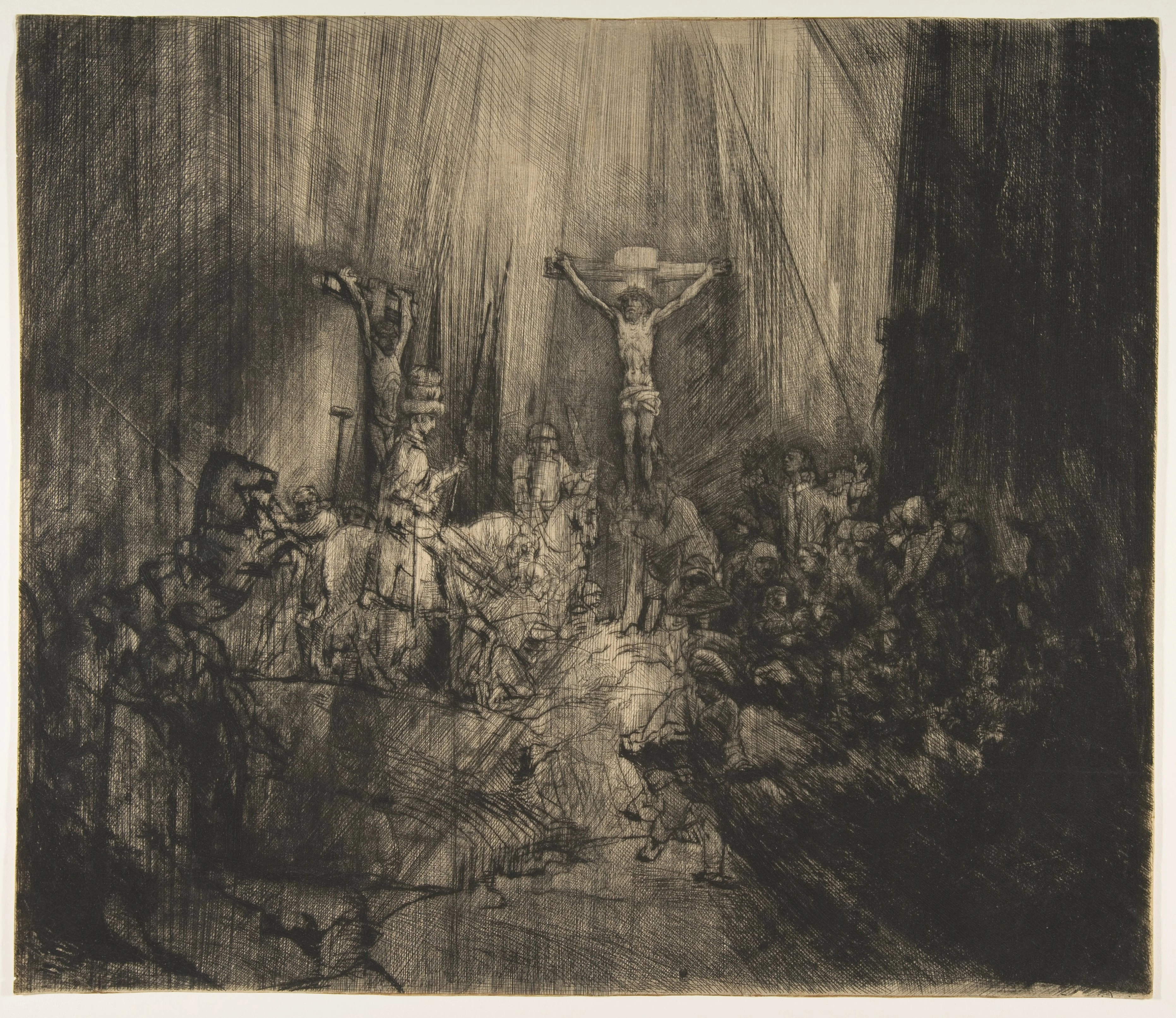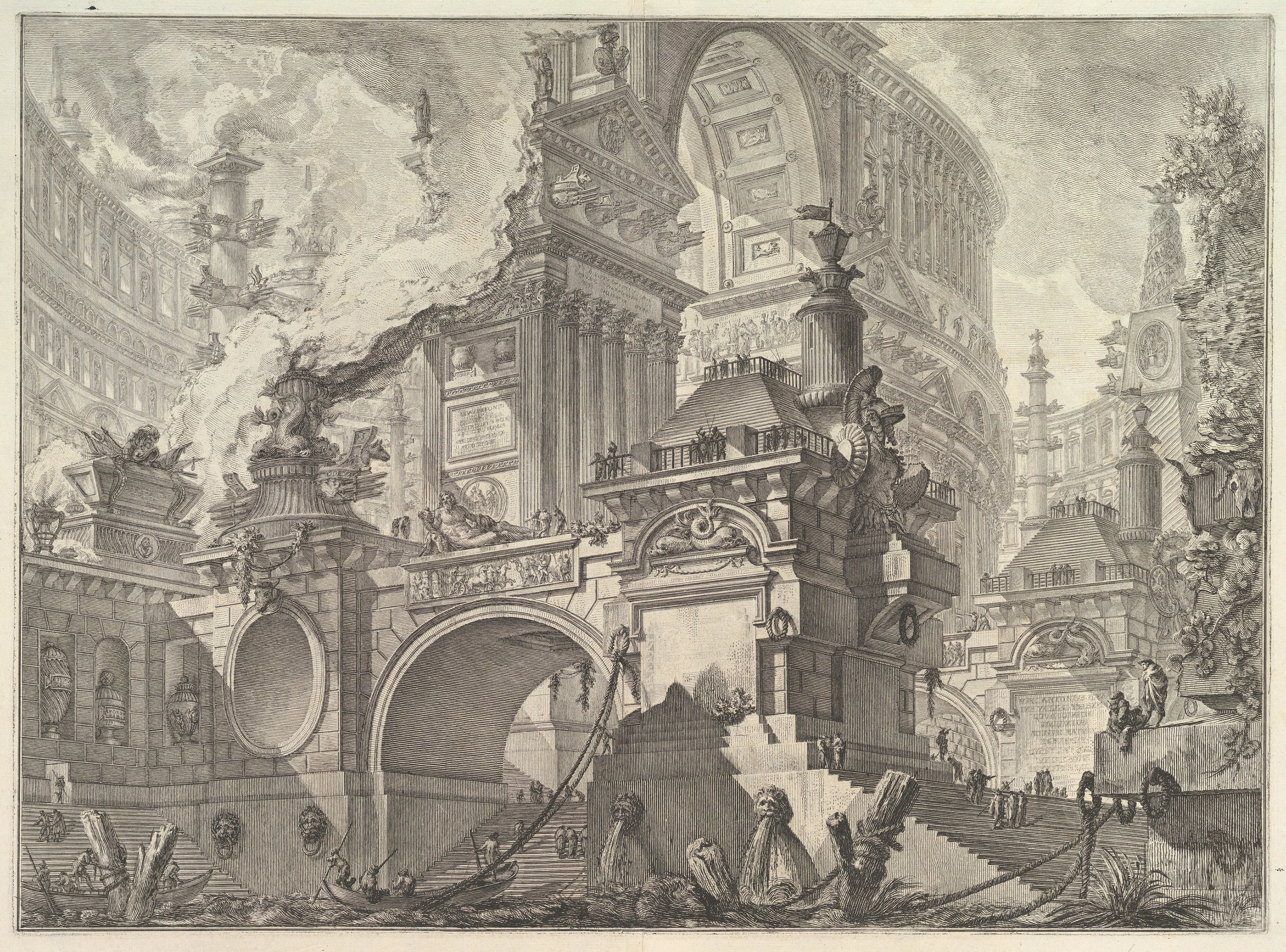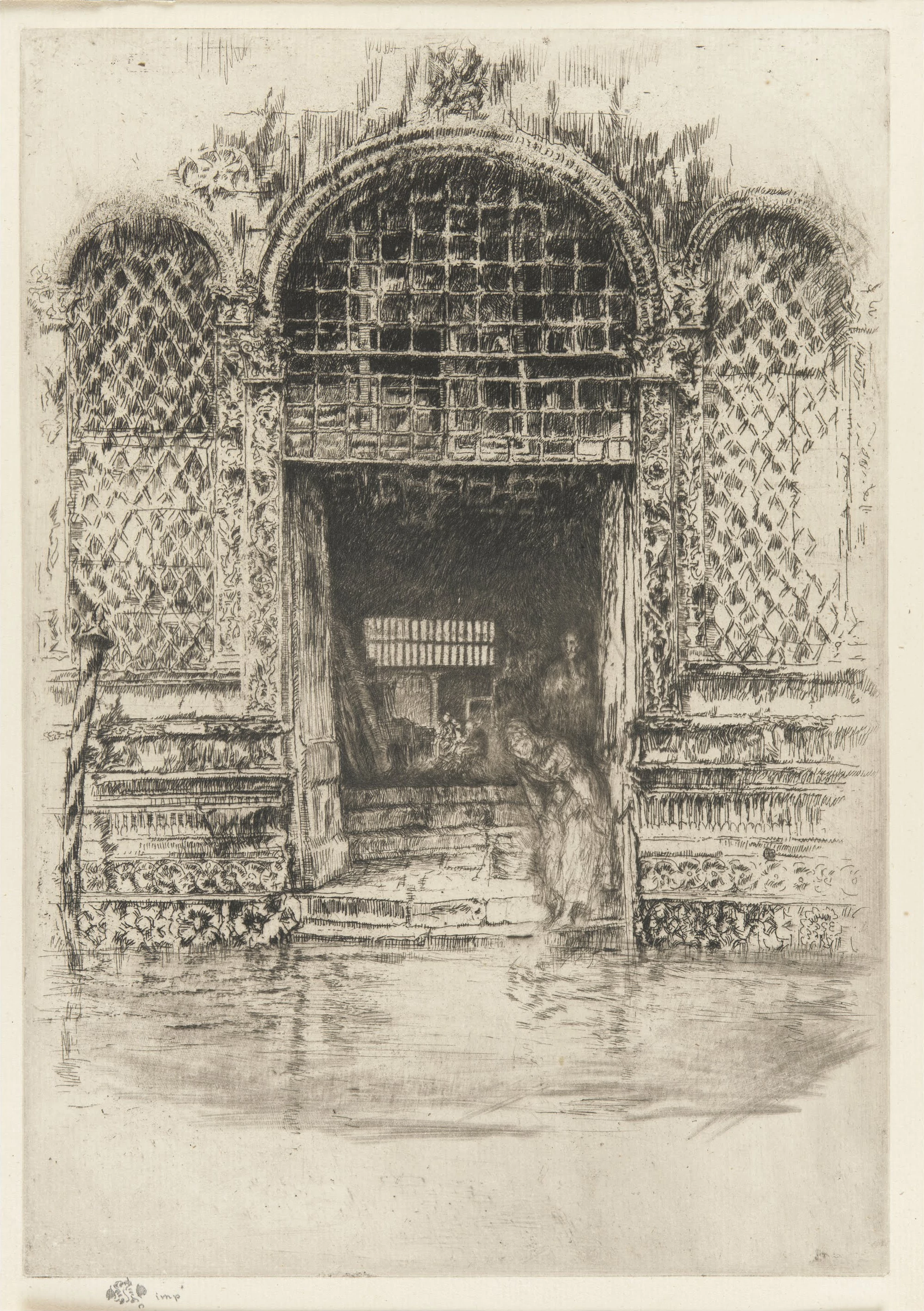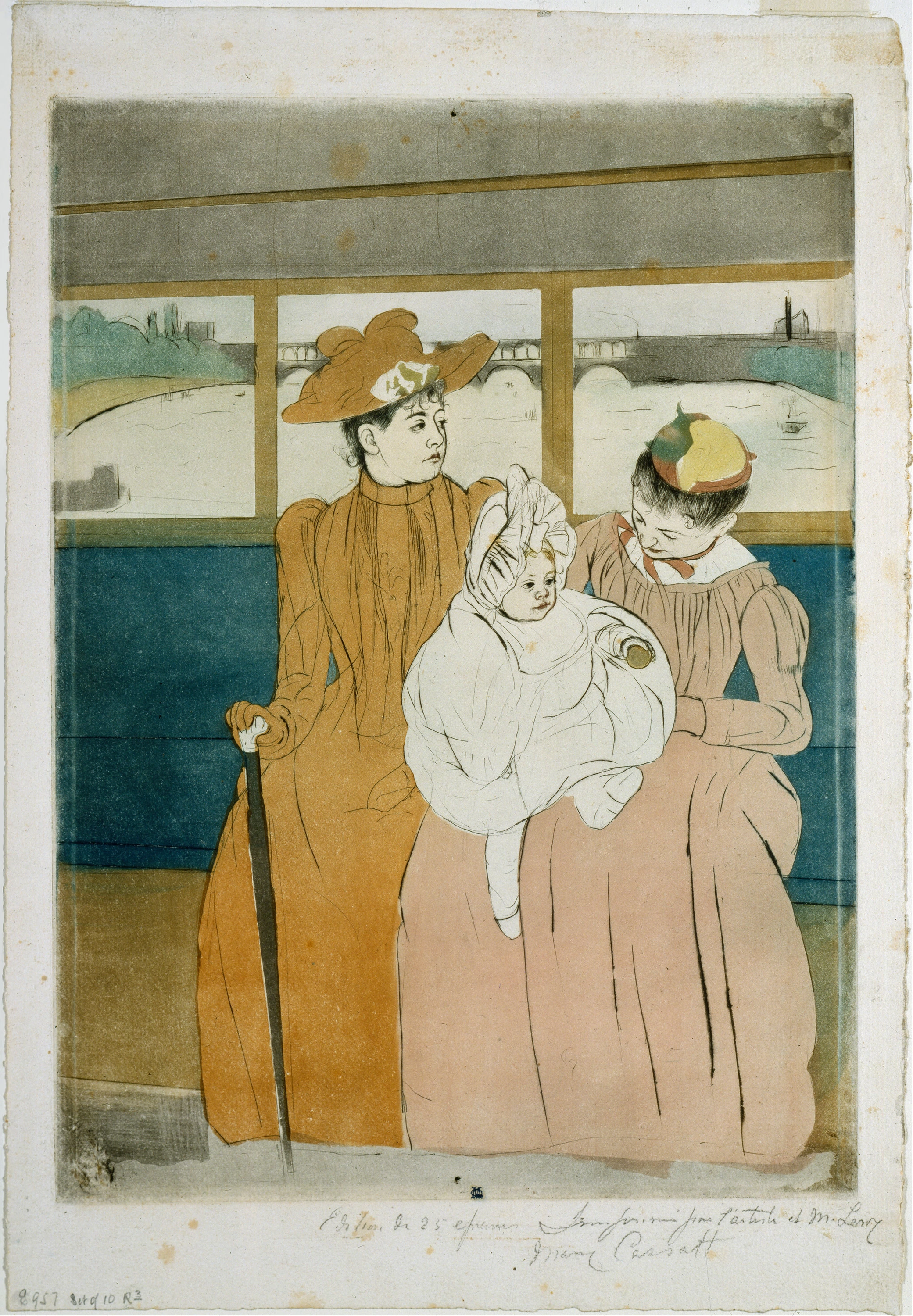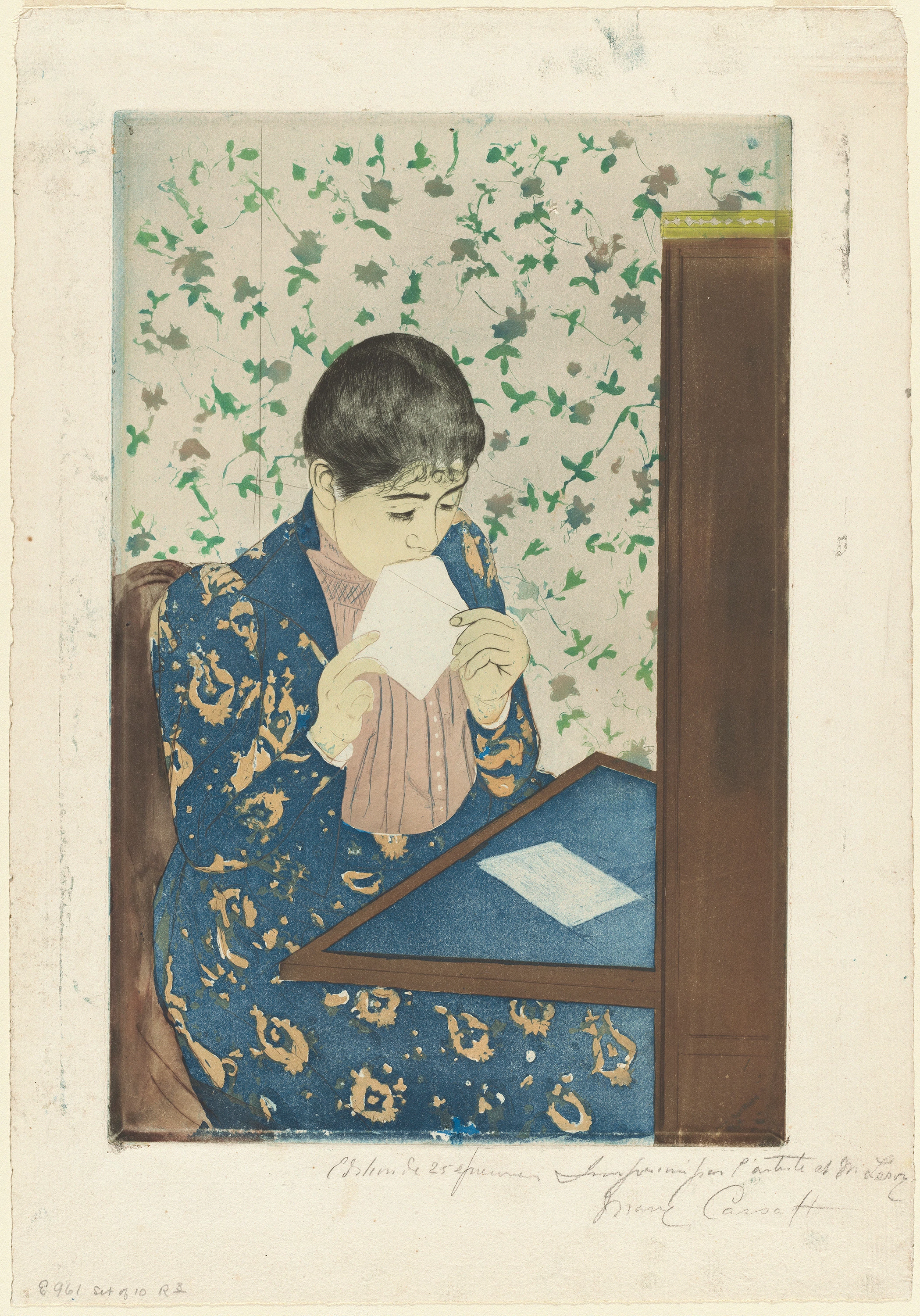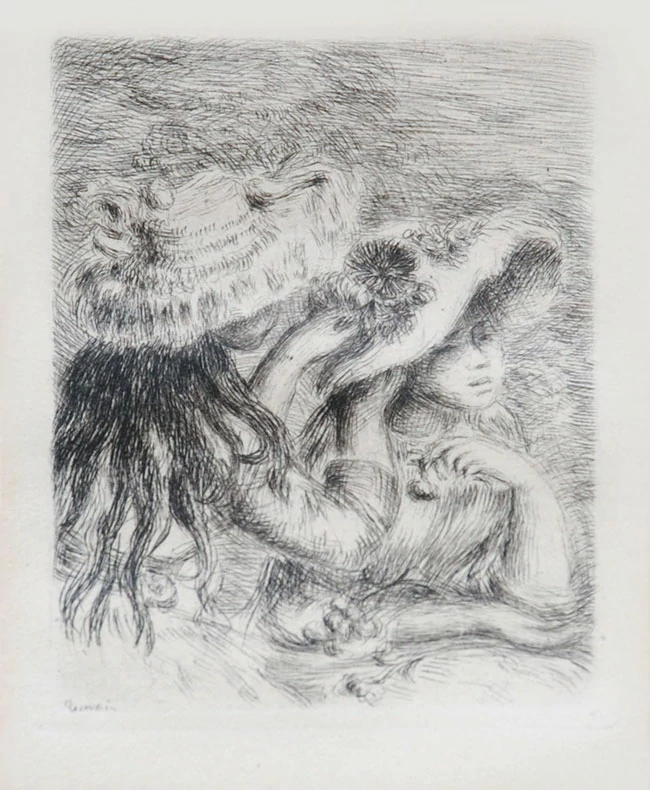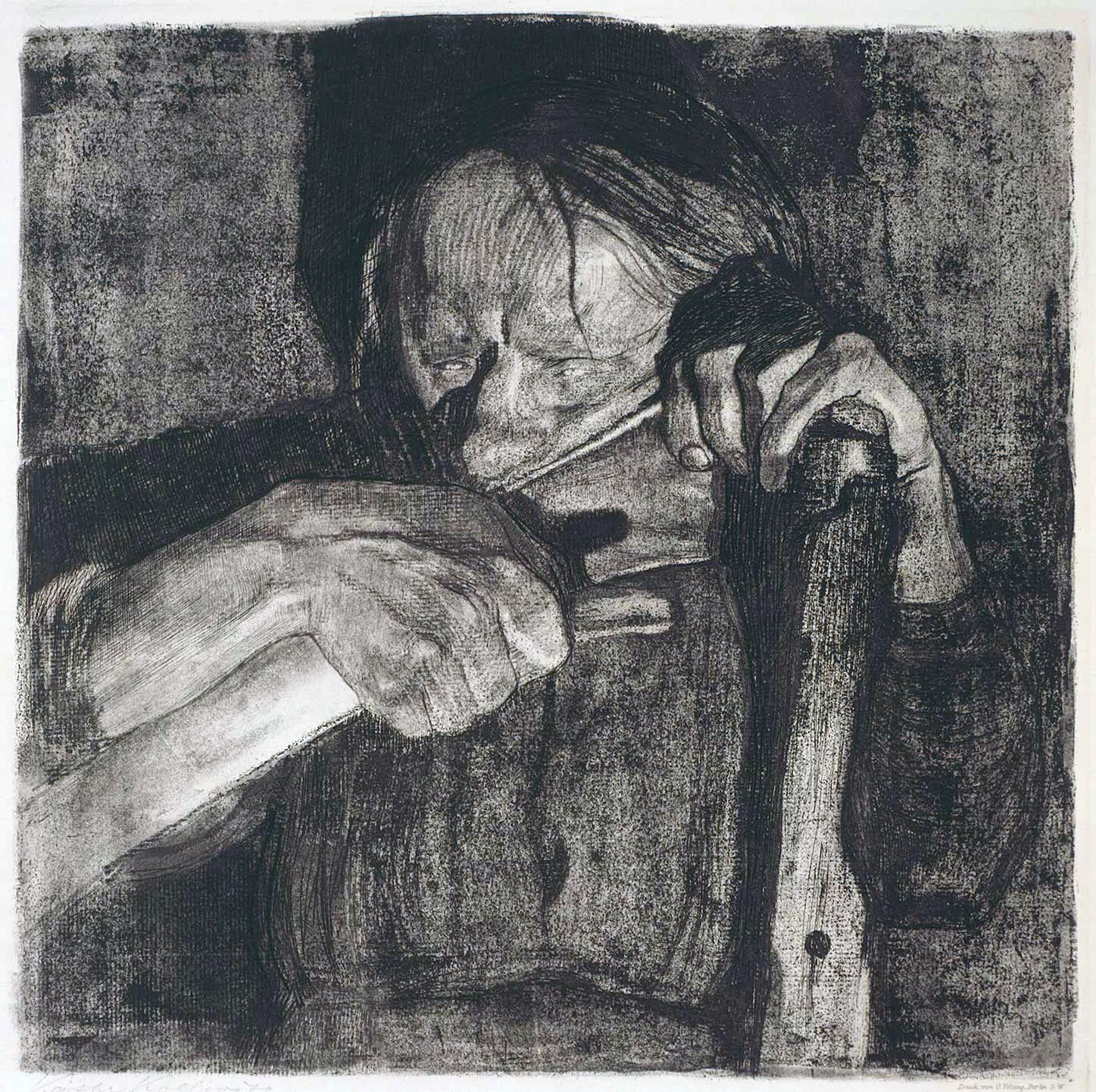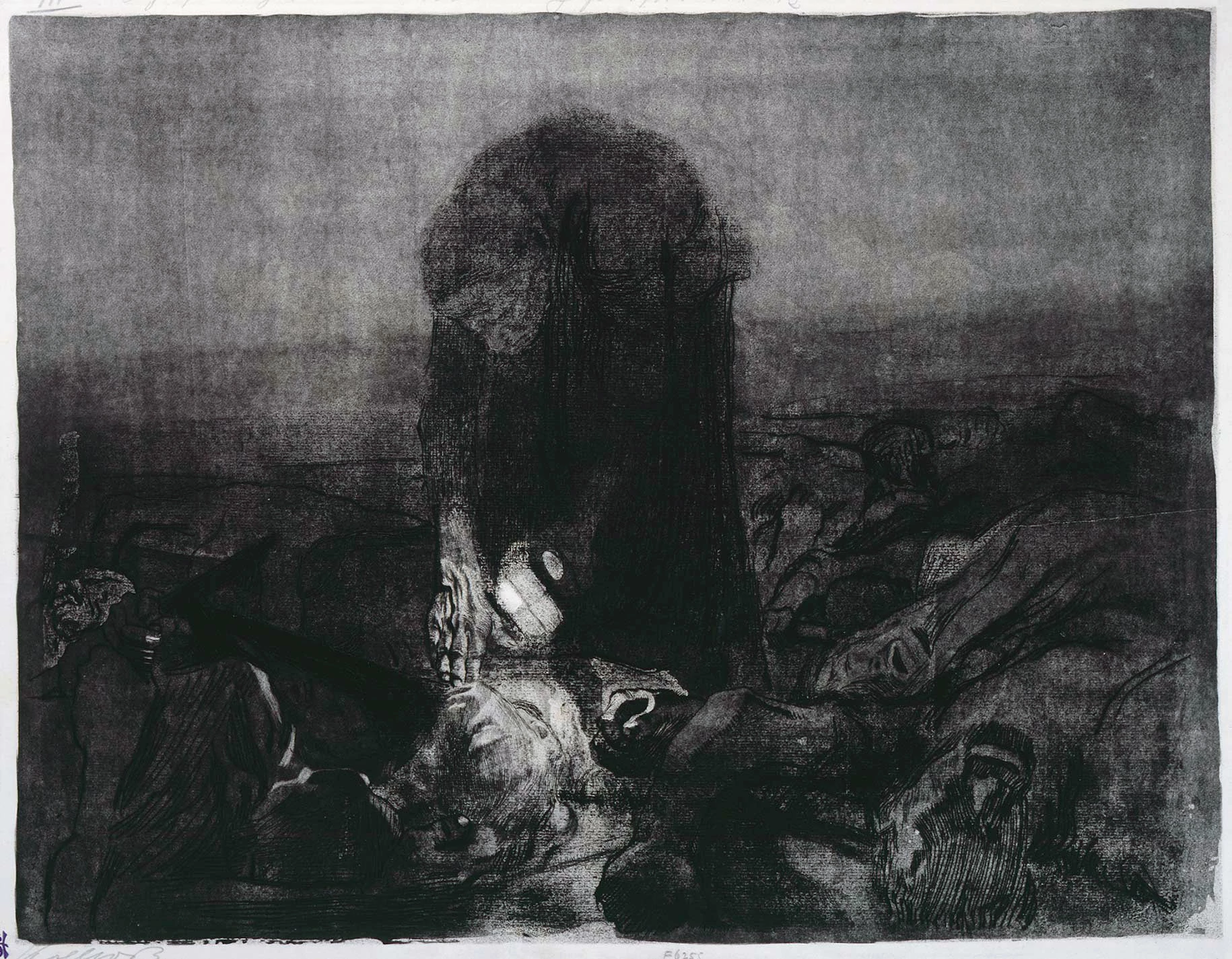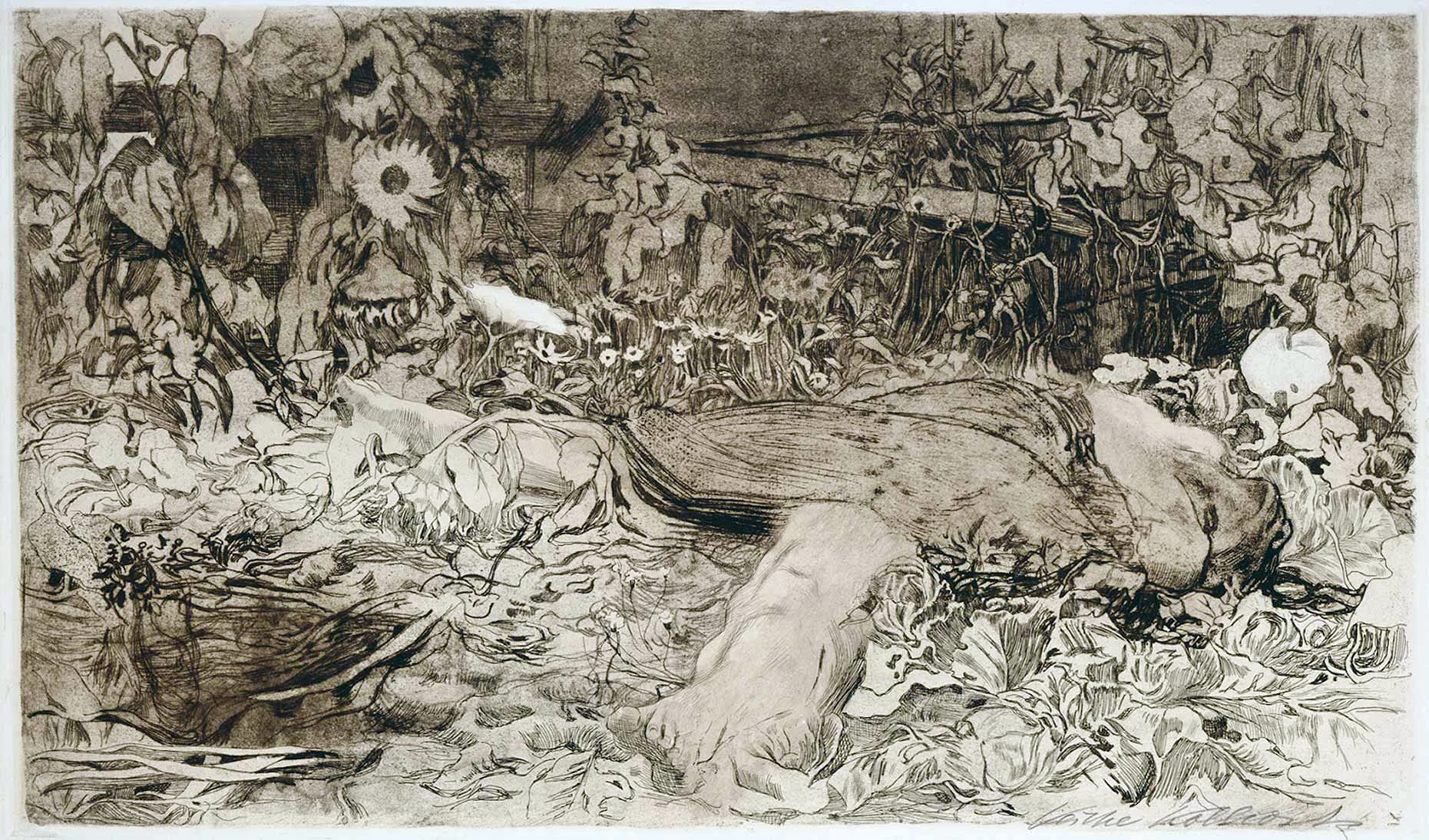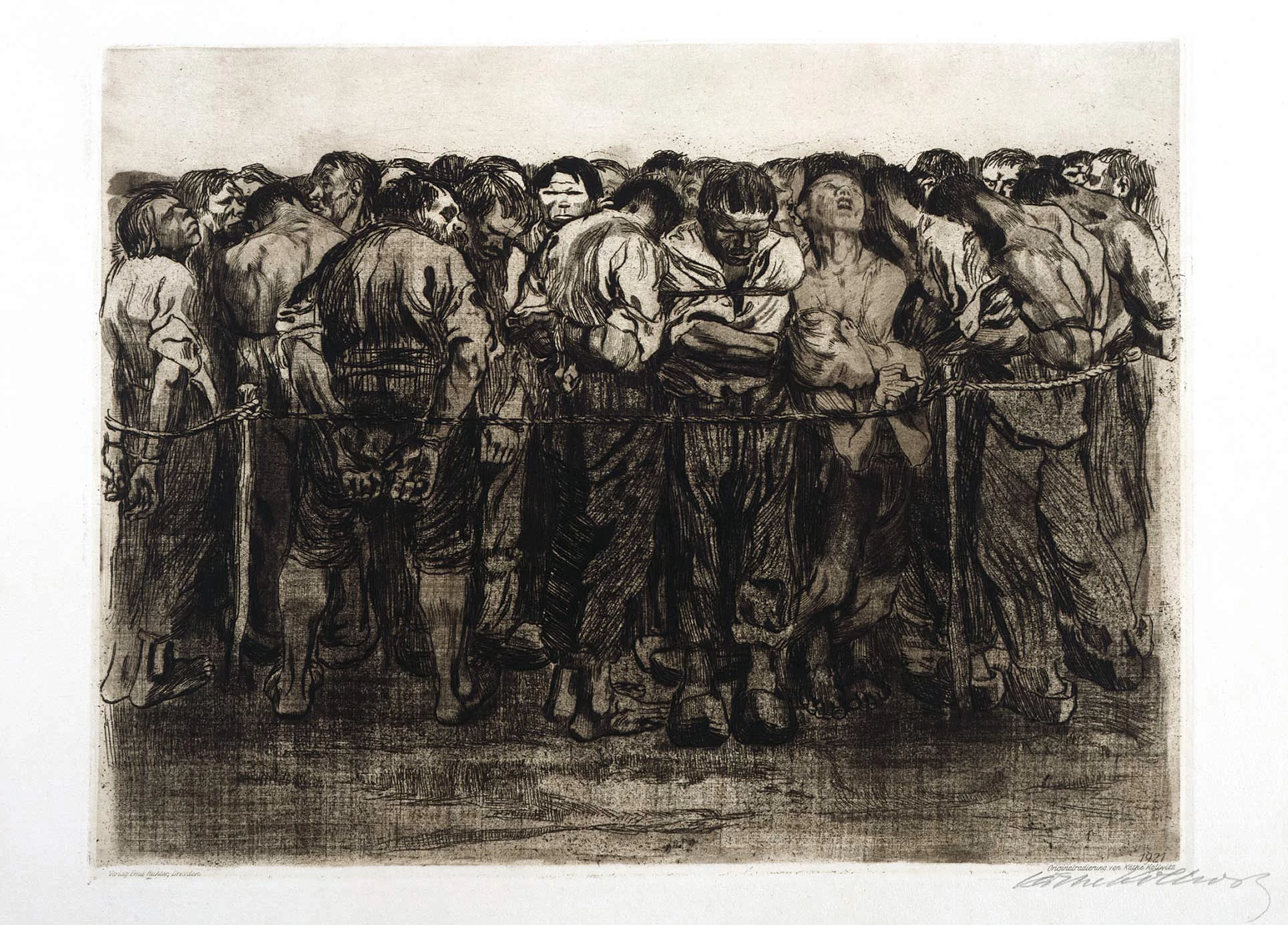Drypoint is the simplest form of Intaglio—the printmaking practice of making marks on a metal plate, wiping ink across the plate so that it sticks to the marks, and then printing the ink onto paper or cloth. While the most common form of intaglio is etching, which uses acid to cut lines into the plate, drypoint is the most direct. Using a sharp, pointed stylus, the artist scratches their drawing directly into the plate, which leaves a raised, rough edge of metal called the burr. Ink is trapped more loosely by the drypoint burr than in the clean grooves left by etching with acid, so drypoint prints often have a blurry, fuzzy quality to their lines.
The first examples of drypoint printing come from an unnamed German artist in the 15th-century, known today only as the Housebook Master, who made ninety-one prints using the technique. The master printmaker Albrecht Dürer made only three prints using drypoint, possibly because after repeated printing the burr wears down, leaving successive prints weaker. Rembrandt is often considered the first master of drypoint, combining it with etching to create deep, expressive scenes that evolved with every printing.



